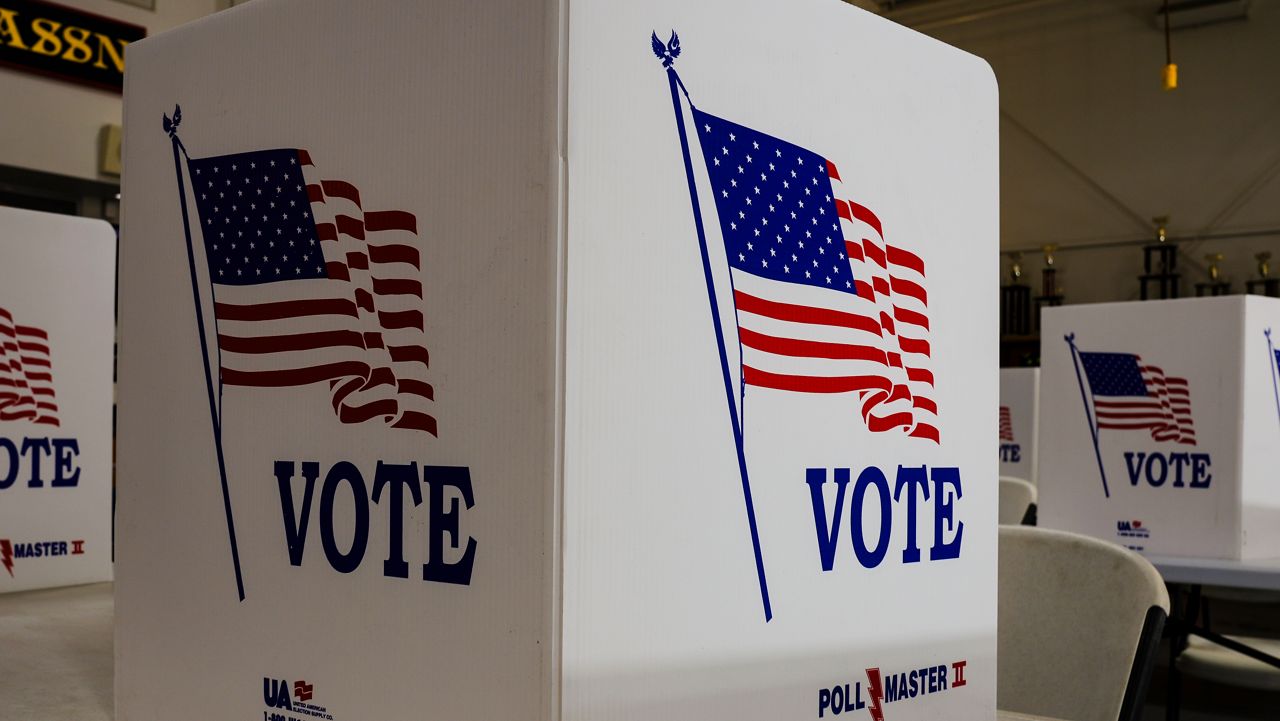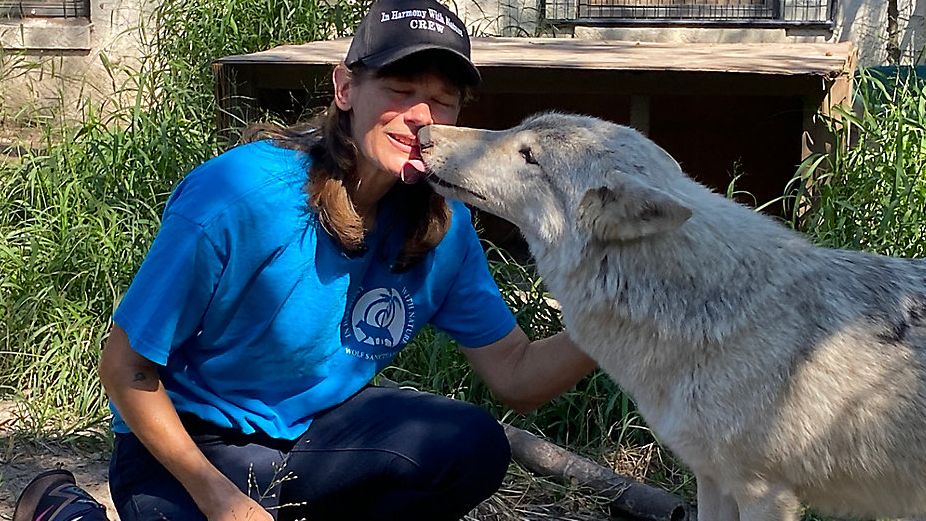ORLANDO, Fla. – It’s a quiet moment inside Orange County Fire Rescue Station 30 in Orlovista before the radio on the hip of Lieutenant Jimmy Berry starts to beep.
- Local fire agencies taking steps to help protect fire fighters diagnosed with cancer
- Firefighter Resources
- More than 4,000 cancer exposure documentation kits to Florida firefighters
- READ: SB 426
The page from dispatch is the latest in what could be one of dozens of calls this single crew responds to during their 24 hour shift.
“It’s tough work, but you don’t really notice it when you have guys and girls helping you out,” Lt. Berry said.
As they race into action, they run to the closet near the trucks and quickly suit up in their bunker gear.
As the engine pulls out of the bay door, lights and sirens blaring, there is one set of bunker gear still hanging behind.
That gear belongs to firefighter Carl Andriano.
“Carl was very competitive,” Lt. Berry said with a slight chuckle. “He was a well-rounded guy, very competitive, but he had a soft side as well.”
Andriano gave his job all that he had.
Fit, athletic, and healthy, the 24 year old Andriano was nearing six years on the force.
Then came October 2013
Andriano followed up a doctor’s visit with a phone call to Lt. Berry.
“I remember I was eating dinner and he called me and I didn’t answer the phone because I was eating at home and then he called me again and I was like something is serious,” Berry said. “I picked up and he told me the whole story and it just changed life after that.”
Andriano told Berry that doctors had found a mass in his lungs. Immediate treatment was needed.
“I remember getting a knot in my stomach and just starting to worry about my friends,” Berry said.
At the young age of 24, Andriano now found himself not fighting for the lives of others, but rather fighting for his own.
Berry said the firehouse found ways to remain positive in the following months, conducting fundraisers to help ease the financial and health burdens.
Then came February 2014
“It was tragic how he left,” Berry said. “Everybody misses him, I miss him dearly, everyone that knew him miss him and when you see his gear every morning we tape the helmet on the head.”
Andriano’s death was followed in 2017 by the passing of another Orange County firefighter.
Stephen “Shakey” Vanravenswaay, 42, died in February 2017 after being diagnosed with Stage IV pancreatic cancer two years before.
Andriano and Vanravenswaay both had fairly healthy lifestyles and no family history of cancer diagnoses.
It is however believed, joined with emerging research, that their cancer may have been linked in some way to their jobs as firefighters.
“Seventy percent of deaths that occur in the line of duty are cancer related, that’s how real it is,” said Jimmy Patronis, Florida’s Chief Financial Officer and State Fire Marshal. “What that tells us is that we have to do better.”
Patronis has been leading the efforts at the state level to cultivate more insight about the cancer risks firefighters face and to develop programs to reduce the risks.
Orange County Fire Rescue Chief Otto Drozd has also been on the frontline of reducing the risk, pushing for change in his roles as a Chief, as well as Second Vice President of the International Fire Chiefs Association and President of the National Fire Protection Association’s Metro Fire Chief Executive Board.
Chief Drozd said research shows the risks are real.
The National Institute for Occupational Safety and Health found that compared to the general population, firefighters are at a 9 percent greater risk of being diagnosed with cancer and a 14 percent greater risk of dying from cancer.
“What’s unique about that is not the 14 percent, but fire fighters are generally healthier and younger than the general public, so if you extrapolate that on top of the 14 percent then it’s a very real risk we’re dealing with every single day within our industry,” Chief Drozd said.
The risks for developing cancer come from the fires themselves, and the risks have grown over time as manufacturing and construction standards have changed.
“When they’re exposed to various chemicals that are in a fire, it’s more dangerous today than ever before in our industry because if you look at household materials, while they were made from natural materials many years ago, there’s all sorts of chemical formulations, and when a fire burns, that is absorbed through the skin, it stays on the skin after the fire,” Chief Drozd said.
The exposure can spread, seeping not only into a person’s skin, but spreading from bunker gear, to cabs of a truck, and then throughout a firehouse.
“I can remember 33 years ago, it was really cool to have dirty gear and go home smelling like smoke, and have the dirty helmet, but we’ve seen way too many people start having cancer,” Chief Jeff Buchanan of Oviedo Fire Rescue said.
Researchers at the University of Miami’s Sylvester Cancer Center are starting to connect the dots.
With state funding, UM researchers are studying the lifestyles and habits of thousands of firefighters across the state as part of the Firefighters Cancer initiative.
Central Florida fire agencies are spending millions of dollars in efforts to reduce exposure to potential cancer causing materials.
While departments are upgrading bunker gear and giving crews additional clean suits, agencies like Orange County Fire Rescue and Oviedo Fire Rescue are installing exhaust evacuation systems.
The hose systems connect to the exhaust pipes of vehicles parked in station bays and helps funnel exhaust outside, reducing exposure to personnel.
As agencies expand policies about cleanliness, they’re making major investments as well.
Orange County Fire Rescue is one of several agencies in the entire United States with its own in-house laundry service, quickly cleaning bunker gear after fire calls.
“We’re early into finding out about it (cancer risks), but I think the culture is starting to change in the fire service,” said Chief Jeff Buchanan of City of Oviedo Fire Rescue. “People are accepting the fact that it’s real, we’ve gone to changing our practice of coming back with dirty gear to now we rinse off at the scene, we clean our gear when we get back, we take a shower, we have a second set of gear, whereas we didn’t use to do that.”
To help in the effort, Patronis’ office distributed more than 4,200 decontamination kits to departments across the state in 2018.
The kits include items to help crews immediately rinse toxic elements off of their gear after being exposed to a fire scene.
Push for Change in Florida Law
As researchers delve into the depths of cancer’s impact on firefighters, their findings can effect not just future prevention efforts, but future care.
Florida law does not currently prescribe benefits for firefighters diagnosed with cancer.
Patronis is campaigning for passage of Senate Bill 426, filed by Miami Republican State Senator Anitere Flores.
The measure, filed for the fourth time in four years, aims to grant certain benefits to firefighters when they are diagnosed with a cancer believed to be caused by on-the-job impact.
“We are trying to make a case for that it becomes a benefit offered as being a part of career fire service,” Patronis said. “It’s no different than Workers’ Comp and PTSD. PTSD was not a coverage that Florida law recognized under Workers’ Comp, so we had to change the law to allow PTSD to be a coverage service as it was identified as a coverage service, then we had the education curriculum, outreach, all of those things to become reality and then cities and counties could embrace it as an offered benefit.”
Patronis said the added benefits, offered by employer municipalities and paid for by firefighters, would extend coverage to help diagnosed firefighters pay for lost wages, healthcare costs, and other bills that aren’t covered by traditional health insurance.
“SB426 will not only remove some of the hurdles firefighters endure as cancer-stricken patients by alleviating the economic concerns amassed during treatment, it ensures their beneficiaries are provided for in case of death,” Senator Anitere Flores said. “I am optimistic this bill will give firefighters and their loved ones the peace of mind they deserve, and it will show everyday heroes that their health is of great importance to the peace of Florida.”
It is a reality that will remain steady in a profession where men and women have to face danger everyday.
It is a call of service that will be answered, but in a way that firefighters say they hope will continue to come with improved safety.









